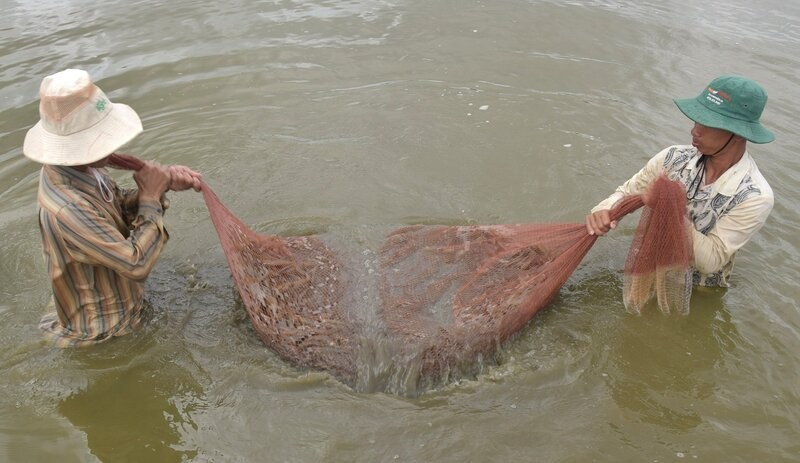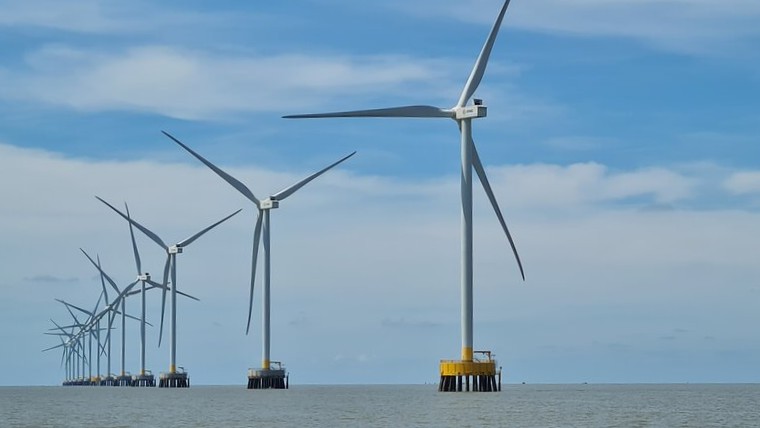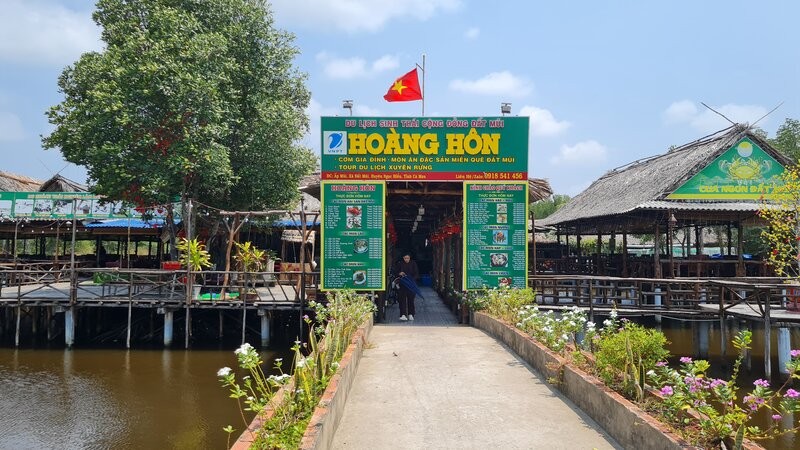Opportunities for the development of the extreme southern region
According to the Project to reorganize Bac Lieu and Ca Mau provinces, the province of Ca Mau after the reorganization (new Ca Mau province) has a coastline of 310 km, a large sea area of about 120,000 km2.
After the merger, Ca Mau is a province with an aquaculture area of about 450,900 hectares, shrimp output continues to lead the country by about 566,000 tons, export turnover reaches about 2.48 billion USD, becoming a place with prime locations for the food and food processing industry, avoiding the situation of broken, small-scale, spontaneous production without planning.

For salt production area, there are more than 3,000 hectares of production, becoming the province with the largest salt production area in the country.
In addition, the new province of Ca Mau attracts projects on clean energy such as wind power, solar power, green hydrogen projects, green ammonia from renewable energy sources... with the largest scale in the country, creating favorable conditions to aim for electricity exports.

The province with a large area and a large population will become a key economic center, attracting domestic and foreign investors thanks to its large market and rich human resources on the basis of developing large industrial parks, urban areas, large-scale specialized areas, focusing on applying high technology to improve productivity and product quality.
Areas can take advantage of each other's advantages to develop evenly and sustainably, form stronger economic centers, businesses and investors will have more confidence in the stability and development potential of the region, facilitate attracting investment projects in transport infrastructure, urban infrastructure, commercial infrastructure, services, create connections and exchanges for socio-economic development between localities; promote and enhance the urbanization rate in the area; plan and develop production, business, trade, services... this is an opportunity to invest in synchronous infrastructure in the direction of civilization, modernity and strongly impact the transformation of economic structure.
Connecting traffic, opening trade
According to the Project, after the merger, Ca Mau province will focus resources to invest in socio-economic development in the locality, especially the connecting transportation system with additional synchronous investment, facilitating socio-economic development. In particular, a relatively comprehensive, modern, synchronous infrastructure system will be formed, ensuring high connectivity such as: airport (Ca Mau Airport); expressway (all vertical axes including Can Tho - Ca Mau Expressway, Ca Mau - Dat Mui Expressway and the Ha Tien - Rach Gia - Bac Lieu Expressway parallel axis); National Highway (National Highway 1, National Highway 63, Quang Lo - Phung Hiep, Ho Chi Minh Road, Nam Song Hau Road, Southern Coastal Corridor Road); coastal road (passing Bac Lieu and Ca Mau); seaport (Hon Khoai and bridge connecting Hon Khoai Island); infrastructure investment to promote the advantages of the province's marine economic centers such as Hanh, Hao Doc, Cai Dai, Khanh Hoi...

In addition, streamlining and restructuring the staff, civil servants and public employees will reduce annual budget expenditures, focus resources to invest in socio-economic development in the locality, improve the quality of life of cadres, civil servants, public employees, workers and people.
The merger also brings positive changes in the social field, helping to reduce differentiation and development differences between regions in living standards, income and development opportunities; improving the quality of public services contributes to better service to the people, such as: Education and health are better invested; social security is focused on; rural infrastructure will be supplemented with synchronous investment; preserving and promoting local cultural values are comprehensive; at the same time, promoting tourism development and cultural exchange activities between regions, contributing to improving the comprehensive life of the people.

The arrangement of administrative units on the basis of similarities in culture, historical traditions, and customs will create high community cohesion among the people, contributing significantly to strengthening and consolidating national defense, security, and social order and safety in the province.
















